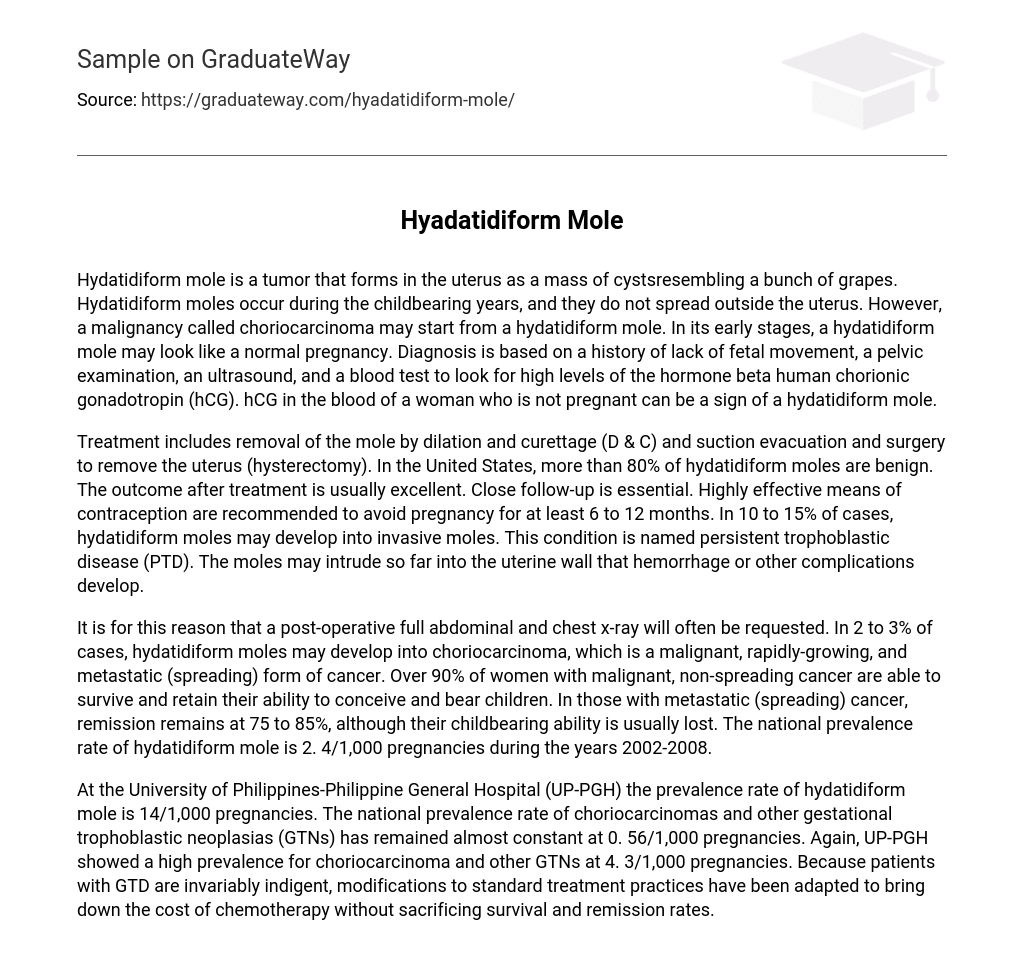The uterus forms a tumor called hydatidiform mole, which looks like a cluster of grape-like cysts. These moles typically occur during a woman’s reproductive years and do not spread outside the uterus. However, they can give rise to choriocarcinoma, a malignant condition. Initially, a hydatidiform mole may appear similar to a normal pregnancy. To diagnose it, healthcare professionals consider factors such as the history of fetal movement absence, pelvic examinations and ultrasound scans results, and blood tests showing elevated levels of beta human chorionic gonadotropin (hCG) hormone. The presence of hCG in the bloodstream of a non-pregnant woman suggests the existence of a hydatidiform mole.
Treatment for hydatidiform moles can include procedures like dilation and curettage (D & C), suction evacuation, or hysterectomy. The majority of these moles in the United States are benign, with a positive outcome after treatment. It is crucial to closely monitor the condition and use highly effective contraception for 6 to 12 months to avoid pregnancy. In 10 to 15% of cases, hydatidiform moles may progress to invasive moles called persistent trophoblastic disease (PTD), which can result in complications such as uterine wall penetration and hemorrhage.
Requesting a post-operative full abdominal and chest x-ray is often necessary after surgery as there is a small chance, around 2 to 3%, of hydatidiform moles progressing into choriocarcinoma. Choriocarcinoma is a rapidly spreading cancer that can metastasize. Fortunately, over 90% of women with non-spreading malignant cancer can survive and still have the ability to conceive and bear children. However, for those with metastatic cancer, remission rates range from 75% to 85%, but they typically lose their fertility. The national prevalence rate of hydatidiform mole during the years 2002-2008 was recorded as 2.4 cases per every 1,000 pregnancies.
The University of Philippines-Philippine General Hospital (UP-PGH) has a hydatidiform mole rate of 14 cases per 1,000 pregnancies and reports a national rate of choriocarcinomas and other gestational trophoblastic neoplasias (GTNs) at 0.56 cases per 1,000 pregnancies. However, UP-PGH experiences a higher prevalence of choriocarcinoma and other GTNs with 4.3 cases per 1,000 pregnancies. To address the financial limitations faced by GTD patients, treatment practices have been adjusted at UP-PGH to reduce chemotherapy costs while maintaining survival and remission rates.





